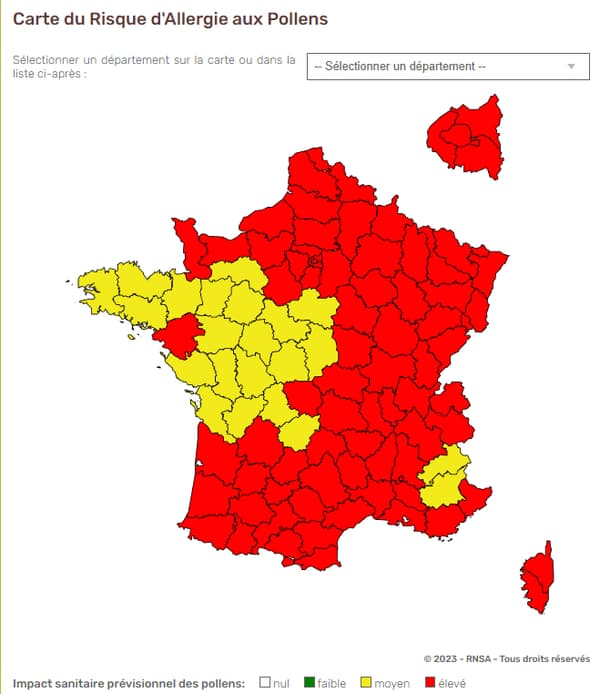Red alert for allergy sufferers. In the latest update of its pollen allergy risk map on February 21, the National Aerobiology Surveillance Network (RNSA) placed three quarters of the departments in metropolitan France in red, a color that corresponds to one “high” risk pollen circulation.
Only a part of the territory that goes from Brittany to the Center Val de Loire, which also includes some departments of New Aquitaine, appears to be preserved and remains yellow (medium risk).

Contacted by BFMTV.com, the RNSA emphasizes that this alert is “normal” at this time of year.
“In February the flowering of various families begins, including the Cupressaceous Taxaceae, throughout the Mediterranean. For the rest it depends on the weather, but as we have had sun and mild temperatures in recent days, alders and hazelnuts have also flourished in the east and north. These are the most allergenic families,” says Samuel Monnier, communications manager for the network.
According to the RNSA, which has 80 pollen sensors throughout the territory, this circulation risk is divided into four families: taxaceae cupressaceae throughout the Mediterranean, ash trees in Aude and Pyrénées-Orientales, hazelnuts in five departments and especially alders, in a large northern and eastern part of the country.
An evolution over time
For the next few days, Samuel Monnier indicates that the evolution “will depend on the weather”.
“The flowering will continue, but the pollens will no longer be in the air if it starts to rain, they will press against the ground and this will give allergy sufferers a little respite,” he says.
Pollen circulation has been highly favored by extremely dry weather for a month. Météo France said on Wednesday that mainland France had no real rain for 32 days, the longest meteorological drought ever recorded. However, some rain is forecast for Wednesday.
An aggravating circumstance also comes into play: pollution. “The pollution and pollen cocktail is not good, and it weakens the airways,” he adds, while several regions have been affected by a fine particle alert in recent days.
Actions to take
As the RNSA also indicates, there are steps to follow to reduce the impact of pollen. At home, it is recommended to rinse your hair at the end of the day and air it about ten minutes before or after sunrise or sunset.
It is also recommended to limit tobacco consumption and avoid the use of irritating or allergenic products (home fragrances, incense, etc.).
Outside, it is advisable to keep the car windows closed, not to dry clothes in the open air, or to avoid activities that avoid overexposure to pollen, such as mowing the lawn or doing sports.
Source: BFM TV

